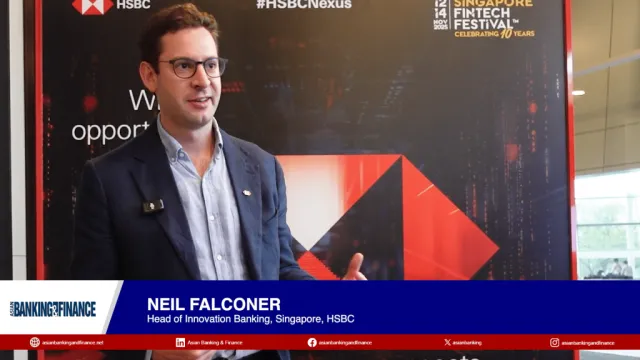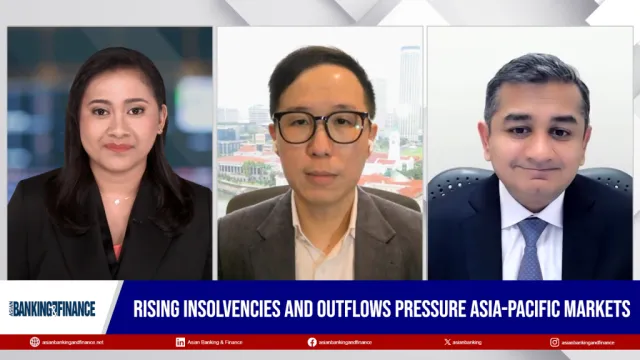
Open banking in APAC: leveraging data, API for better solutions
Banks have to remain consistent and continuous in testing best practices.
The pandemic and its related disruptions have definitely accelerated the rise of open banking in Asia’s financial sector. Not only does it extend financial inclusivity into otherwise underserved markets and populations, but it also allows for open access to financial data from financial institutions through the use of application programming interfaces (API).
“Under the open banking framework, the desire of having a single platform with integrated digital services, especially with the more aggregated financial information will certainly help both consumers and businesses to focus on achieving their financial targets, their business goals in a manner that is probably most relevant and most seamless,” Irene Xu, director of banking practice for SAS Asia Pacific Global Industry Practice said.
In an exclusive interview with Asian Banking and Finance, Xu shared the current status of Asia Pacific in terms of open banking, the most important factors banks must consider before jumping into leveraging data, useful practices in artificial intelligence (AI) and machine learning (ML), and how SAS stands out from other providers when talking about open banking.
Where does the Asia Pacific financial sector stand in terms of open banking?
In this region, we can expect open banking as the next biggest disruptive force in the financial services industry not only due to the fast rise of the extensive digital economies but also that we have observed very strong support from many local regulators in this region, with the intention to bring more competitive and better financial products and services to the community.
Under the open banking framework, the desire of having a single platform with integrated digital services, especially with the more aggregated financial information will certainly help both consumers and businesses to focus on achieving their financial targets, their business goals in a manner that is probably most relevant and most seamless.
Although that I would say that at this stage, open banking has not been made mandatory, but we have observed that banks in Singapore are very much embracing it and have actively adopting technologies like APIs to build partnerships as well as participate in the larger ecosystem as we see in local banks such as DBS, OCBC, and many others.
You mentioned Singapore. In your opinion, what made Singaporean banks embrace open banking more?
I wouldn't say that only banks in Singapore have embraced open banking more. We have seen in this region, like markets such as Australia, Hong Kong, the Philippines, and Malaysia, a kind of anxiety around this. Not only that these efforts were strongly supported by regulators, but also the players in these markets are very supportive of this and are trying to be on top of the latest technologies.
What are the most important considerations before leveraging data for insights and decision making?
In many of our conversations with leaders and organisations, I think it is no longer a question of knowing that there's value from data and analytics. I think the challenges really lie in the know-how, the change in mindset, and the change in the culture within the entire company. Analytics should not be just limited to a select unit or function; rather, it should be happening at all levels within the bank. If I were to put the most important considerations in three dimensions, I think, first of all, it's very important to focus on the customer when we consider the use of data in analytics to derive insights and help businesses make decisions.
Having digital-savvy leaders in place involves bringing the latest technology, adopting the latest capabilities, or even changing processes as part of the transformation. The faster that you can make these cultural changes, that's where you will see an increased chance of success and increase the speed to realise value for both the customer and the business.
Second, whilst having the right vision and digital-savvy leaders in place are important, the organization has to build the right capabilities that involve investments, as well as talent and skills development. If I can give you an example, in areas of adopting tools or platforms to make information more accessible to people within the bank, it is very important to consider what type of data is being accessed, how the data is being consumed, protected, and governed to ensure information security because these are the areas that people are very concerned about when we talk about data sharing.
At the data consumption level, we will also see a rising demand in visualisation which will really empower the end-users in the business itself. People involved in product management and finance can use these kinds of visualised capabilities to perform quick analyses to help them accelerate the decision-making process. At the end of the day, it is how you can, as a business, be fast to respond to the market, look at the latest technologies, and invest in the right capabilities.
The last point I would say is that when we look at open banking, one of the most important elements is driving innovation under this large ecosystem. Innovation certainly is not a one-time initiative. It requires continuous effort to test and learn what works and what does not. Therefore, I think the capability to support a test and learn with some level of automation will significantly support the execution of new business ideas.
How can AI and machine learning help the sector overcome challenges, such as legacy systems and security issues regarding sharing data with third-party providers?
Banks invest significantly in technologies like AI, machine learning and deep learning to help harness data for business decisions, address gaps, and have a deeper understanding of their customers. One of the interesting areas is in the small and medium enterprise businesses.
Traditionally, I will say that small and medium enterprises (SMEs) see a lot more difficulties in terms of accessing finance, getting additional capital, and funding because they are often associated with higher risks, insufficient information, or lack of collateral. Based on what we have seen in the past, it can be as high as 50% of SMEs getting rejected when applying for loans. It's a very unpleasant experience and the whole process can be lengthy and laborious.
As we have seen in banks that are in an early stage of adopting AI and automation, I would say that they have significantly changed and optimised the customer experience. One of the best examples that I could share is Mizuho Bank in Japan which launched this new service called Mizuho Smart Business Loans in 2019. Under this service, the bank has internal data, as well as external information to understand customer transactions, particularly on deposit information. From there, it helps them understand the company's ability to repay the debt.
They have also adopted API and automation processes so that SMEs are no longer required to submit paper documents or financial statements, leading to a significantly reduced turnaround time of two to three working days.
Considering all of that, how does SAS stand out from other providers in terms of open banking?
SAS is very well known in the financial services industry especially in the banking sector where 90% of the top 100 global banks are using our technologies and solutions. I have experienced and witnessed the changes in SAS as we shifted our focus to helping our customers generate value by solving business problems like leveraging data, AI, and analytics.
I would just like to quickly talk a little bit about capabilities. From that perspective, SAS is the pioneer in advanced analytics and artificial intelligence. We believe that analytics, AI, automation, real-time decision making, as well as the cloud-native setup are seeing an increase in demand from many of our banking customers because they help significantly improve operational efficiency and reduce overall costs. At the same time, it helps banks increase their flexibility and accessibility.
In order for banks to make smarter decisions in real-time, it is critical for them to know where their customers are in terms of their journey. With all of these key capabilities in place, banks will be able to focus on their core business and provide a more personalised experience to their customers.
Can you give examples of useful practices in data management, AI, and ML that are useful in the new normal? How can these practices withstand the evolution of technology?
There’s a lot of use cases of us helping our banking customers implement, or provide them with domain expertise to guide them in using advanced analytics and AI. We have helped CIMB Bank branches in Singapore build a common data platform. With this in place, it helped them to enable much more actionable analytics insights for holistic decision-making, aside from addressing key pain points such as siloed infrastructure and incomplete data. Within a year of implementation, CIMB has seen a significant improvement in customer engagement which helped generate more sales and revenue.
In addition, we have seen an increased use of advanced analytics and AI in the private banking business in recent years. Earlier this year, the Bank of Singapore announced that they will actually implement SAS’ AI-powered communications and the built-in analytics in their training and the monitoring of client-representative performance. This framework and methodology will help the bank monitor its sales practice and compliance with the regulator.
How do you see the transformation of open banking as the decade progresses?
The pandemic has caused an unprecedented level of upheaval in many areas of the banking industry. We have seen that banks are re-evaluating their engagement with their customers, as well as re-examining the products and services that they offer, especially through digital channels. From an open banking perspective, there's really no better time than now for banks to take advantage of these new developments.
Firstly, API certainly plays a very critical element in the development of open banking. From that perspective, regulatory requirements are very much driven by the local regulators and vary from market to market. One of the key things that we are seeing is probably, very soon we will see much more standardised API regulations at the global level which will help players have much better access at a significantly lower cost.
Secondly, it goes back to our early conversation in terms of the adoption of data analytics, cloud computing, as well as other real-time capabilities because it’s important for banks to leverage these new solutions in order to provide services in real time.
Lastly, in the areas of security, privacy and fraud detection, the main concerns are how data can be governed, how data privacy is secured whilst information is being shared amongst banks, and how third-party providers can guarantee protection just in case attackers try to take advantage. It's certainly important for banks to look at the right infrastructure and capabilities to ensure they can identify third-party API model vulnerabilities, as well as using AI and machine learning to prevent and detect fraud quicker.
Photo courtesy of NASA

















 Advertise
Advertise









